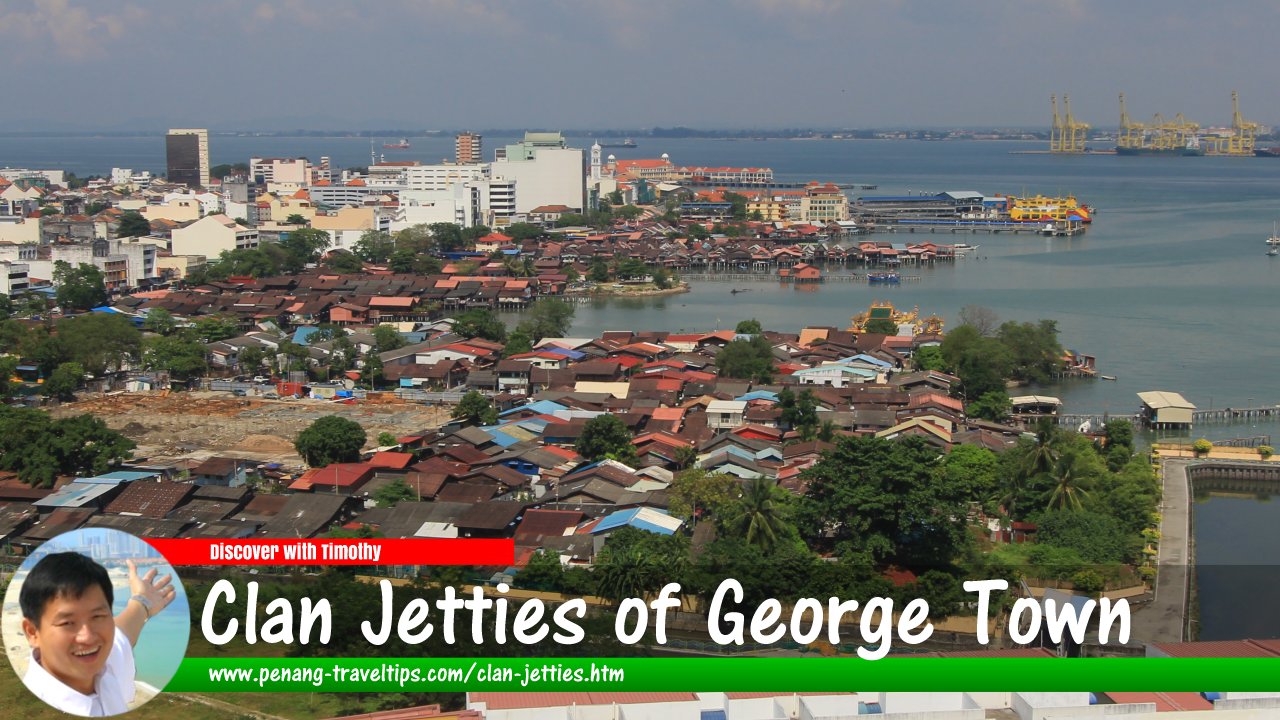 Clan Jetties of George Town (25 January 2013)
Clan Jetties of George Town (25 January 2013)
The Clan Jetties of George Town are the traditional settlement created by Chinese immigrants who share common historical, geographical and lineage origin.
Existing Clan Jetties
Today there are still six clan jetties along the waterfront, and they are as follows, from north to south:Expunged Clan Jetty
Koay Jetty was demolished in 2006.Videos of the Clan Jetties and vicinity
Snaeh1 Koay1 Kio2
 , also known as Koay Jetty which extended out of Presgrave Street Ghaut, was demolished around 2005 to make way the construction of flats off the Jelutong Expressway, despite protests from historians and conservationists.
, also known as Koay Jetty which extended out of Presgrave Street Ghaut, was demolished around 2005 to make way the construction of flats off the Jelutong Expressway, despite protests from historians and conservationists.Apart from Cap3 Snaeh3 Kio2, with its mixed clans, the rest used to be exclusively inhabited by its respective clansmen. There used to be more of such jetties lining the seafront of George Town, all the way down the coast of Jelutong. The jetties that have since been erased by disuse and dilapidation include Noordin Street Ghaut Jetty, Peng Aun Jetty, Ban Liaw Jetty, Poh Lan/Lallang Jetty, Hup Choon Jetty, the former Lee Jetty and the former Ong Jetty. As the various jetties appeared and fell away at different periods, between the late 19th century to the 1960s, it is difficult to a total, unless we simply count all regardless when they were built.
How to go to the Clan Jetties of George Town
The clan jetties are within walking distance of the Weld Quay Bus Terminal, so it can easily be reached by bus, taxi and ferry. The Penang Hop-On Hop-Off Tourist Bus also stops there.Location of the Clan Jetties on the map
Brief History of the Clan Jetties
The Clan Jetties of George Town only came about in the late 19th century, following the reclamation of the George Town waterfront that extended the shoreline outward. Before that, the inhabitants of the clan jetties had made do by crammed surroundings on Toh Aka Lane, Sam3pan1 Hang33 at Stewart Lane, parts of Acheen Street and Armenian Street. They only moved out of these places when the clan jetties came into being.Until the shoreline was reclaimed, the original shore fronting Beach Street had a series of stone steps leading down to the water's edge. These were known as the ghauts. Following reclamation, the new roads took on the name of the roads on the opposite side of Beach Street, with the word "ghaut" added to them. They lead to the new shorefront at newly laid Weld Quay. Materializing here are a series of jetties which morphed into clan-based communities, hence they were known as the clan jetties.
Clan jetties proliferated in the first half of the 20th century, with new jetties being added further south of the earlier ones, lining the southern coast of George Town, all the way to the mouth of the Prangin River/Prangin Canal at Ang3 Teng3 Kark3
 (literally, the Red Lantern Corner).
(literally, the Red Lantern Corner).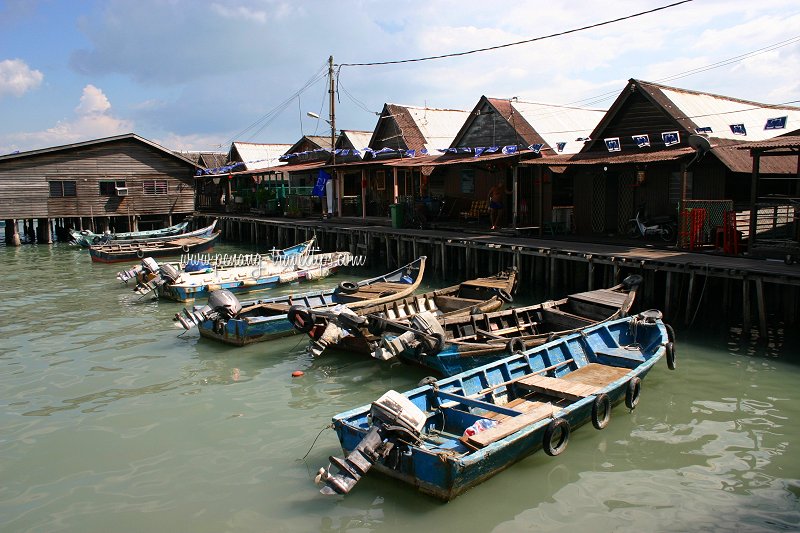 Boats lining Chew Jetty (14 March 2004)
Boats lining Chew Jetty (14 March 2004)
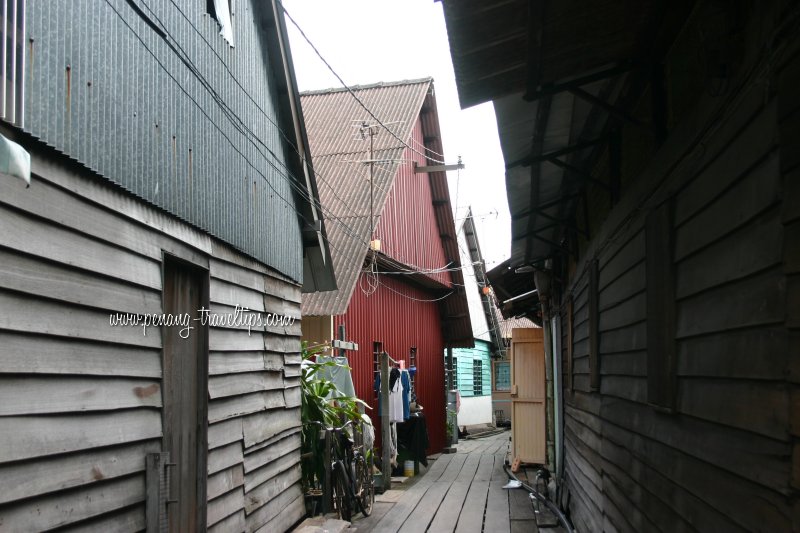 Plankway in the Clan Jetties (14 March 2004)
Plankway in the Clan Jetties (14 March 2004)
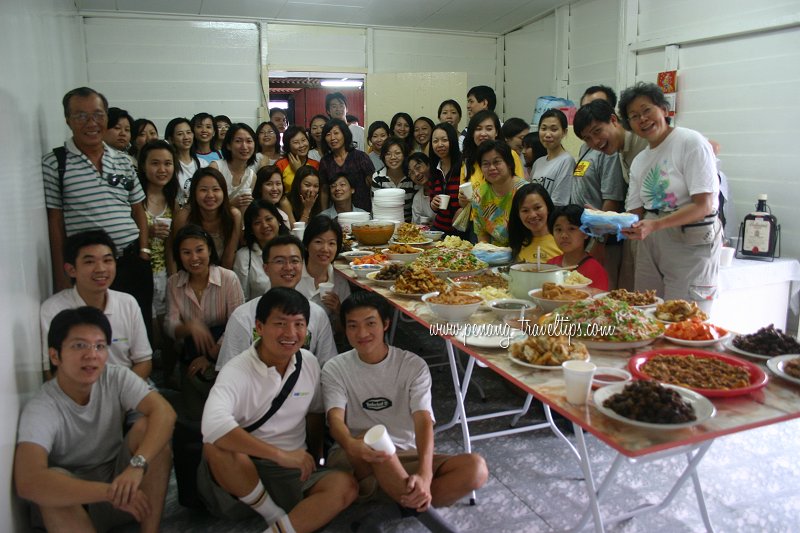 Visitors enjoying a feast at Chew Jetty (14 March 2004)
Visitors enjoying a feast at Chew Jetty (14 March 2004)
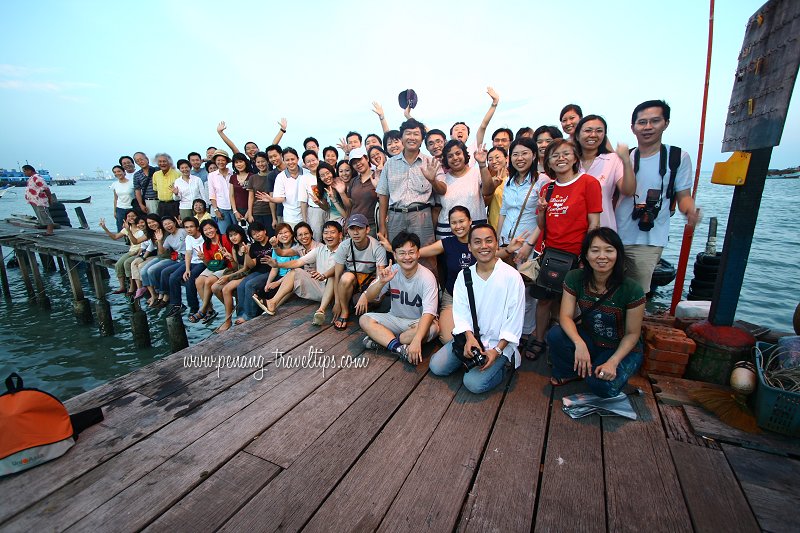 Visiting Chew Jetty (15 July 2006)
Visiting Chew Jetty (15 July 2006)
The Lims, Chews and Lees were directly involved in harbour activities, offering their services as boatmen in transporting cargo from the bigger steamship to the shore.1. On the other hand, the Tans, Yeohs and Koays were more involved in the firewood trade and the making of charcoal. The raw material for charcoal making comes from the mangrove the line the shore which co-existed with the jetties.
Despite assurances from the British authorities of the legal standing of the occupants of the clan jetties, they were only given Temporary Occupation Licenses following the independence of Malaya1 which have to be renewed annually. This provided the occupants with no guarantee that their jetty dwellings would be permanent.
As George Town began to modernise, the clan jetties faced repeated threats of demolition, with the authorities viewing them as an urban slum. It did not help that the wooden structures were fire prone. However, conservationists have a different point of view, and regarded the clan jetties as an excellent example of a traditional lifestyle within an urban environment, and fought to have these jetties preserved. So when the dossier for World Heritage inscription was prepared, the clan jetties were included as part of George Town's heritage legacy.
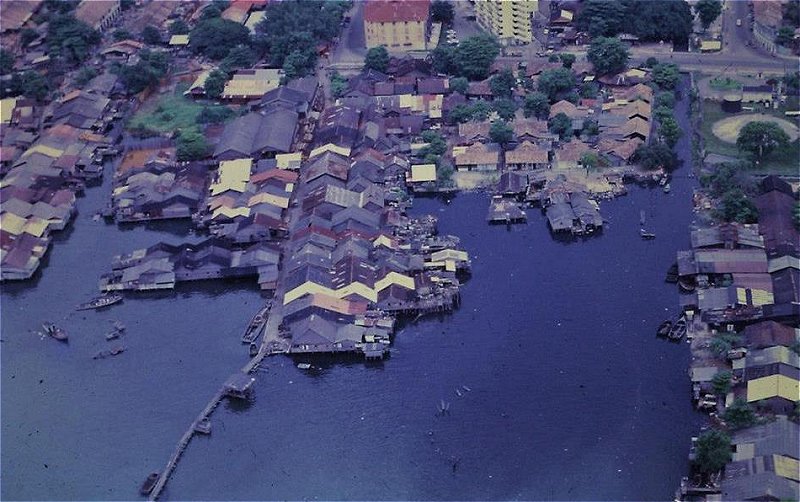 The Clan Jetties in 1975
The Clan Jetties in 1975© Ivan Murray
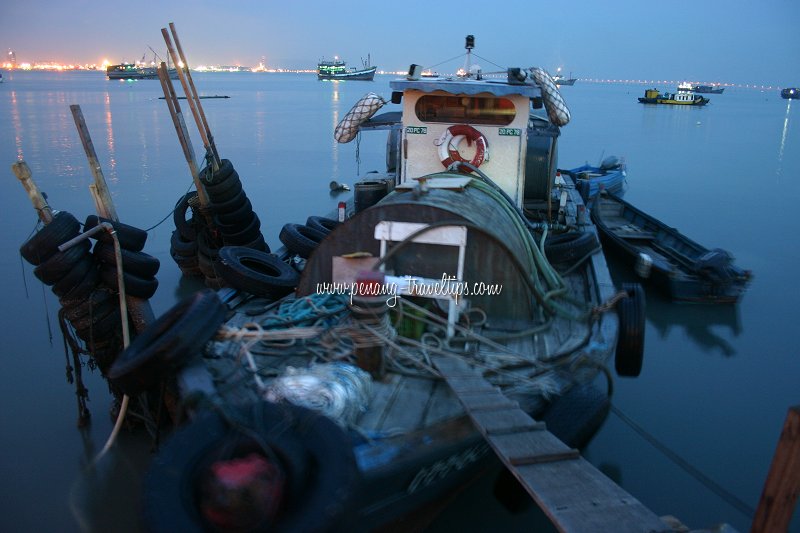 Boat at the Clan Jetties (14 March 2004)
Boat at the Clan Jetties (14 March 2004)
Preserving the Clan Jetties
Although there are efforts to save and preserve the clan jetties as an integral part of the heritage of Penang, to be honest, the jetties have lost much of its authenticity as well as its raison d'être. It was originally constructed to house the port labourers and indenture coolies who were too poor to find housing on land. Today, the descendents of these labourers are no longer finding work at the Penang harbour, now that harbour work has been very much mechanised. Therefore, what is preserved is not the jettys as they were, but a shantytown or water-borne ghetto. Even the building material for the clan jetties have evolved. From the original thatch roofing, the houses now have zinc roofs and satellite dishes.I have worked hard to celebrate the heritage and historical treasures of Penang. However, I disagree that the clan jetty should be preserved as they are. While many argue that they are a tangible heritage, I feel they have evolved beyond that. The people who once lived and worked there are no longer around; while their offsprings have aspirations to lead a modern life, similar to everybody else in Penang. Rather than keeping them frozen in time, those who once lived in the clan jetties who wish to move elsewhere should be allowed to do so.
I am mindful that the original jetty dwellers lived there not out of will, they did so because they had no other choice. It was the only form of dwelling they could afford. I feel their children should be given the opportunity for better dwelling, even if it means a nondescript high rise apartment, as long as they get to enjoy the higher living standard that escaped their forefathers. There are romantics who fought zealously to have the jetties preserved. I would love to have the heritage jetties preserved, but what we are preserving here is not the original, thatch-roof, wooden jetties. Nor are we preserving the original lifestyle of the inhabitant. What we are preserving is something neither here nor there.
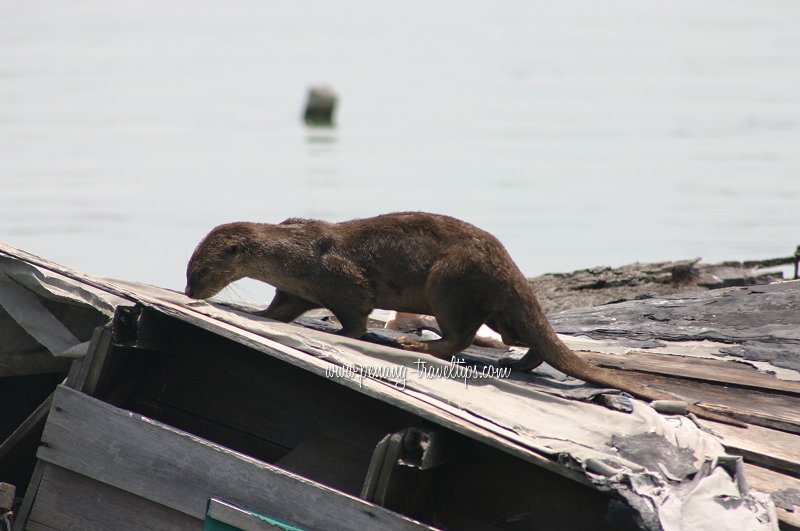 An otter scavenging for food at the Clan Jetties (14 March 2004)
An otter scavenging for food at the Clan Jetties (14 March 2004)
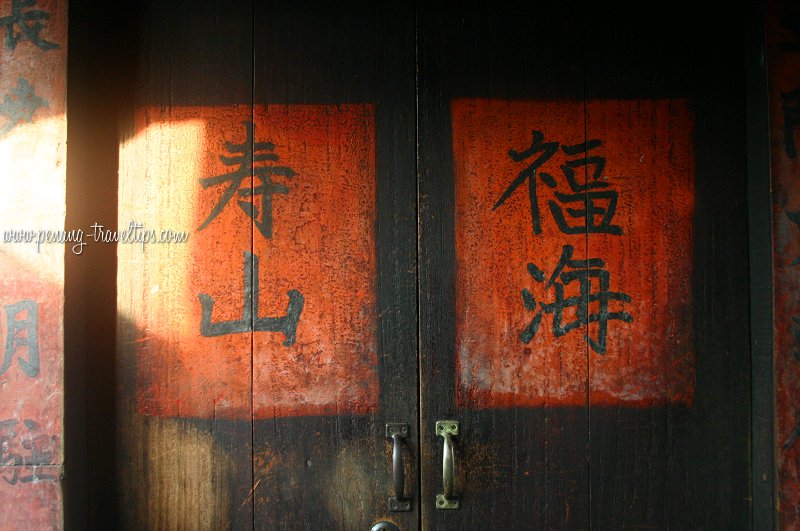 A door at the Clan Jetties (14 March 2004)
A door at the Clan Jetties (14 March 2004)
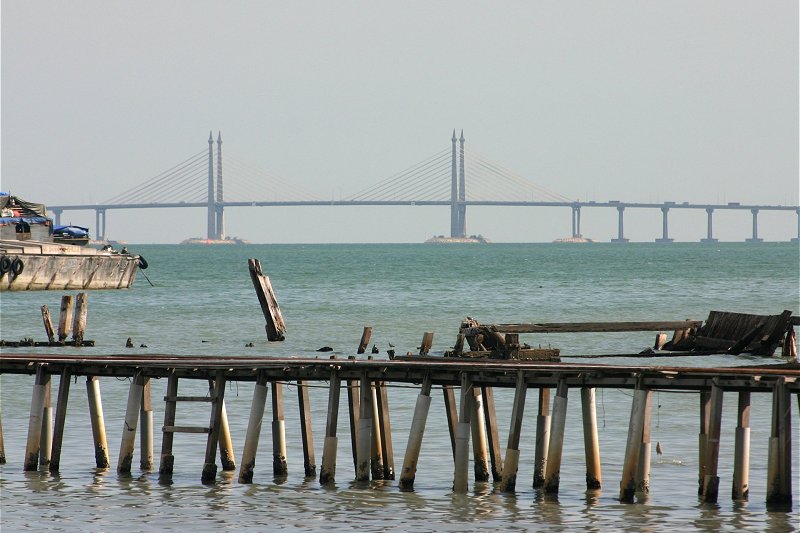 Old and New: A Clan Jetty with the Penang Bridge (14 March 2004)
Old and New: A Clan Jetty with the Penang Bridge (14 March 2004)
References
- Clement Liang, The Clan Jetties of George Town, page 2
List of Penang Tourist Attractions

Copyright © 2003-2025 Timothy Tye. All Rights Reserved.

 Go Back
Go Back